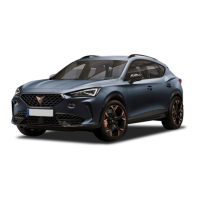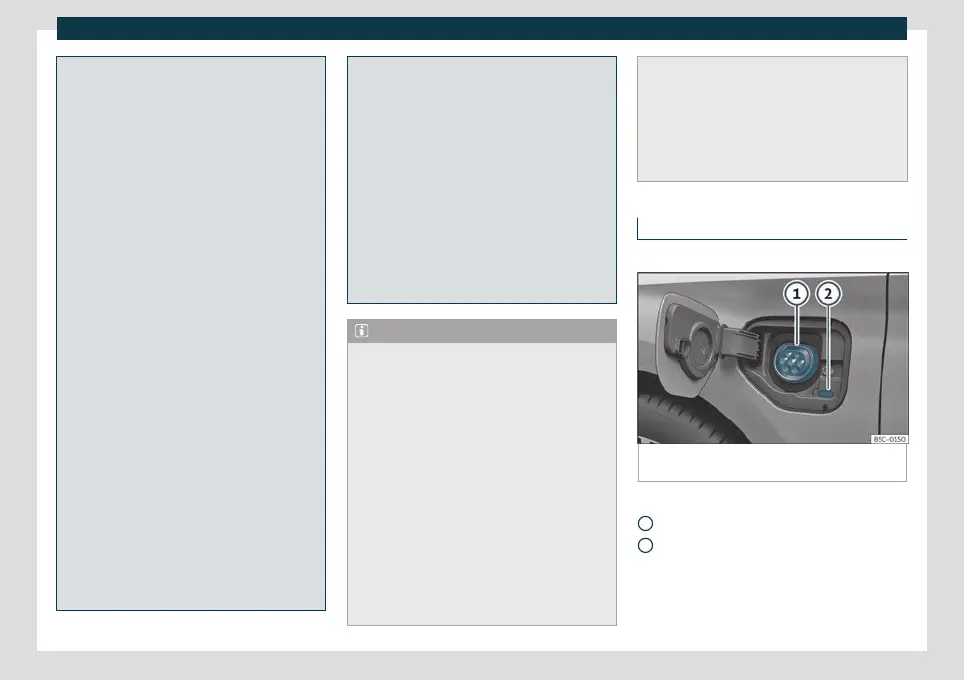Battery
●
Only plug in the charging cable t
o an
electrical socket that is protected from wa-
ter, humidity and other liquids.
●
Never charge the vehicle in potentially
explosive atmospheres. The components
of the charging cable can cause sparks and,
therefore, may ignite flammable or explo-
sive vapours.
●
Never use damaged charging connectors
or cables. Before each use, check that the
connector and charging cable are not dam-
aged.
●
Never use the charging cable with an ex-
tension lead, rolled cable, power strip or
adapter, e.g. adapter for other countries or
timer.
●
Always protect the connectors to prevent
water, moisture and other liquids from di-
rectly getting inside.
●
For safety reasons, no other work should
be performed on the vehicle while it is
charging.
●
Always end the charging process before
unplugging the mains connector. Other-
wise the charging cable and the electrical
installation may also be damaged.
●
Never charge several vehicles simultane-
ously from electrical sockets of the same
safety circuit. Use a different safety circuit
to charge additional vehicles. Always check
the maximum current or power of the safe-
ty circuit that is used. If necessary, seek ad-
vice from qualified electrical installation
prof
essionals.
●
Only use the charging cables supplied
with the vehicle or the charging station ca-
ble. If the cable needs to be replaced, it is
recommended to exclusively use CUPRA
charging cables.
●
Never make changes or repairs to electri-
cal components, particularly the high volt-
age system.
●
Always unplug the charging cable before
starting the vehicle. Place the protective
caps and close the cover of the battery
charging socket.
Note
●
The high-voltage battery can only be
charged at charging stations that meet the
following requirements and regulations:
–
IEC 61851 and IEC 62196 (type 2 con-
nector).
●
Very low or very high temperatures can
noticeably reduce the high voltage bat-
tery’s charging power.
●
To avoid possible compatibility problems
with charging infrastructures, CUPRA rec-
ommends the use of cables and home
charging stations recommended by the
Volkswagen Group.
●
For charging with alternating current,
CUPRA recommends charging the high-
voltage battery at maximum charging pow-
er from a fixed charging station or Wallbox.
This achiev
es greater efficiency when com-
pared to charging from an electrical socket.
●
Check the technical information about
your vehicle’s charging capacity. You can
get more information a specialised CUPRA
dealer or any SEAT dealership.
AC charging
3 Valid for: hybrid vehicles
Fig. 189
Behind the battery charging cover on the
front left-hand side: Charging socket
›››
Fig. 189
char
ging sock
et
Charging process display
The battery charger installed in the vehicle
converts alternating current from the public
supply into direct current.
1
2
304

